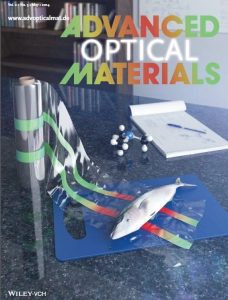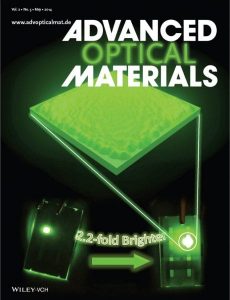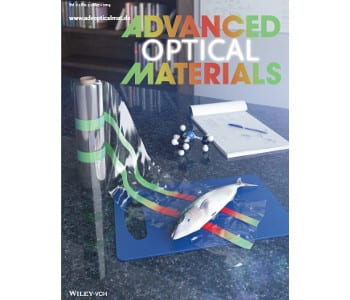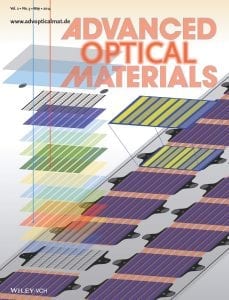The latest issue of Advanced Optical Materials is now available. Don’t miss out: take advantage of the current free access to all Advanced Optical Materials articles by signing up here!
These articles were highlighted on the covers of Advanced Optical Materials in May:
 Sensors
Sensors
The front cover shows a green reflecting, hydrogen-bonded, cholesteric liquid crystal polymer film which has been inkjet-printed on a foilsuitable for food packaging by C. W. M. Bastiaansen, A. P. H. J. Schenning, and co-workers. This foil can be used as an optical sensor to detect volatile amines that are produced by decaying fish, in this case trimethylamine gas, resulting in a red color. The authors thank ICMS Animation Studio for preparing their cover image.
Our inside cover highlights a new contactless light beam-induced current method, which can be used to identify defects in complex organic multilayer films such as flexible and roll-to-roll processed OPV and tandem OPV modules. In the case of tandem OPV, the method employed by F. C. Krebs and M. Jørgensen uses two lasers with different wavelengths to address the individual junctions. Full roll-to-roll contactless testing with solar cells moving at constant speed is possible using a unique coupling scheme combined with signal processing.

Light Extraction
The back cover shows a low-cost nano-modified substrates integrating both internal and external light extractors, which was developed by S. Chen, H.-S. Kwok, and co-workers. An internal light extractor is constructed by wet-chemical etching as-deposited AZO, while an external light extractor is easily built by coating a BTPE-nanowire-based scattering film. With the integrated substrate, OLEDs exhibit an impressive forward efficiency improvement of 1.6-fold and a total efficiency improvement of 2.2-fold.


















